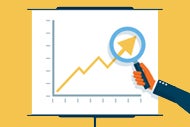

Predictive Modeling Could Create Better Sightlines to Forecast Finances
 Predictive modeling has helped hospitals and health systems project clinical outcomes, enhance workflows and identify patient preferences, but this tool may also give leaders better intelligence to forecast finances amid this year’s economic uncertainties.
Predictive modeling has helped hospitals and health systems project clinical outcomes, enhance workflows and identify patient preferences, but this tool may also give leaders better intelligence to forecast finances amid this year’s economic uncertainties.
Some provider organizations use predictive modeling to prepare for shifts in the insurance market, the economy, utilization, consumer behavior and future waves of infection disease, notes a recent PwC forecast. And data from a PwC survey conducted last fall found that 74% of health care executives planned to invest more in predictive modeling this year.
To make smarter decisions in real time and develop a more resilient business model, health care leaders need to better understand supply and demand — something that predictive modeling can help achieve, Gurpreet Singh, health services sector leader at PwC, told MedCity News.
Predictive modeling applications can also benefit other areas of provider organization operations.
Customer relationship management tools, for example, can help predict demand and suggest the optimal channel for virtual or in-person care. Analytics platforms that can identify at-risk patient groups for targeted care are another type of predictive modeling technology. Data from these systems can help hospitals and health systems provide more personalized wellness care to potentially reduce hospitalizations.
Newer-generation predictive modeling platforms use more data elements than earlier systems to deliver more accurate predictions, some experts note, and also link predictions from the analytics to interventions.



